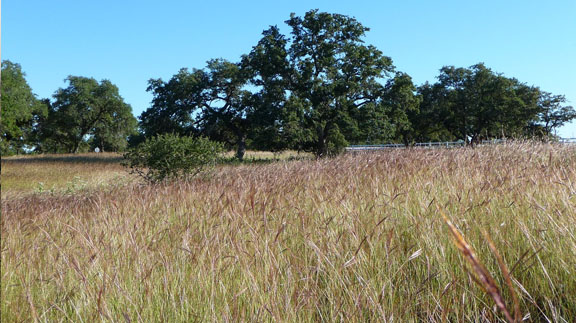Farm & Ranch
Conservation Stewardship Deadline Approaching

Conservation Stewardship Deadline Approaching
Center for Rural Affairs offers Farm Bill Helpline to Assist Producers
Short timeframe for producers to submit initial application
Washington, DC – USDA’s National Resources Conservation Service (NRCS) recently announced the opening of the Conservation Stewardship Program (CSP) for new enrollments in 2015. Farmers, ranchers and foresters interested in participating in the program can submit applications to NRCS through February 27, 2015 to be considered in the 2015 round of ranking applications and awarding contracts.
“The CSP is a continuous sign-up program that has periodic cut-off dates for ranking applications. February 27, 2015 is the deadline for the coming year,” said Traci Bruckner, Senior Policy Associate for Agriculture and Conservation at the Center for Rural Affairs. “Applications can be filed at your local NRCS office. We know this is a very short timeline but producers just have to file a simple application by the February 27 deadline.”
As part of the CSP application process, applicants will work with NRCS field personnel to complete a resource inventory of their land, which will help determine the conservation performance for existing and new conservation activities. The applicant’s conservation performance will be used to determine eligibility, ranking and payments. Contracts are awarded to those offering the highest level of environmental benefits, with NRCS working down through the list of eligible applicants until acreage allocated to the particular state runs out.
In addition, producers who received a CSP contract in 2011 have the opportunity to renew their contract for another five-year period. Renewal applications must be received by March 31, 2015 to ensure a seamless transition into their next contract without a lapse in payments. Renewal contracts do not compete with new applicants.
According to Bruckner, the Conservation Stewardship Program is a voluntary stewardship incentives program, administered by NRCS, designed to reward farmers, ranchers, and foresters for maintaining existing conservation, as well as for the adoption of additional conservation measures that provide multiple environmental benefits that run beyond the farm or ranch. This program pays producers for clean water, better soil management, improved habitat, energy efficiency, and other natural resource benefits. Since the program began in 2009, nearly 70 million acres of farm and ranch land have been enrolled in the program.
Bruckner encouraged potential applicants to call the Center’s Farm Bill Helpline to learn more about the application process and help uncover and overcome barriers encountered during that process by calling (402) 687-2100 or emailing her at [email protected].
“The Center for Rural Affairs has a long history of assisting family farmers and ranchers access farm bill programs,” continued Bruckner. “The Center’s Farm Bill helpline provides a direct connection to Center staff with knowledge about program rules to help you understand if a particular program will fit your needs.”
Resources are available to help producers consider the CSP and make their applications. In addition to contacting the Center’s Farm Bill Helpline for additional assistance in navigating the application process, application materials and information are available through the Center for Rural Affairs website, USDA’s website, your local NRCS office, and the National Sustainable Agriculture Coalition.
CSP resources for farmers and ranchers:
USDA’s CSP website – http://www.nrcs.usda.gov/wps/portal/nrcs/main/national/programs/financial/csp/
Center for Rural Affairs Helpline – (402) 687-2100 or [email protected]
USDA Service Center locator – http://offices.sc.egov.usda.gov/locator/app (to locate local NRCS offices)
###
Established in 1973, the Center for Rural Affairs is a private, non-profit organization working to strengthen small businesses, family farms and ranches, and rural communities through action oriented programs addressing social, economic, and environmental issues.
Farm & Ranch
Hazards of Backyard Poultry

By Barry Whitworth, DVM
Having backyard poultry is a popular agriculture enterprise. According to the United States Department of Agriculture, 0.8 percent of all households in the United States have chickens. People keep chickens for a variety of reasons with table eggs being one of the more common reasons.
Unfortunately, some of these poultry producers are not aware of the hazards that come with keeping poultry because many times they carry pathogens but appear healthy.
Chickens are carriers of several zoonotic diseases. These are diseases that can be passed from animals to humans. According to a recent survey in Pennsylvania, a majority of backyard poultry producers were aware of the dangers of avian influenza. However, this study also revealed that far fewer producers were aware of the risk of possible exposure to Salmonella and Campylobacter.
The lack of knowledge about the hazards of raising poultry likely contributes to the continued issues of Salmonella outbreaks associated with backyard poultry. In 2023, the Centers for Disease Control and Prevention reported 1,072 illnesses of Salmonella linked to backyard poultry, and 272 of those patients required hospitalization. Oklahoma reported 43 individuals with the disease.
To read more, pick up a copy of the April issue of NTFR magazine. To subscribe by mail, call 940-872-5922.
Farm & Ranch
Ag Elsewhere: Wyoming

By Tressa Lawrence
Babies are tucked away in every nook and cranny. Many ranchers across Wyoming have baby animals popping up all over this time of year.
Farm & Ranch
Ag Elsewhere: Montana

By Lindsey Monk
Another load of grain in to keep feeding the calves until the green grass can really start popping.
-

 Country Lifestyles1 year ago
Country Lifestyles1 year agoScott & Stacey Schumacher: A Growth Mindset
-

 Equine7 months ago
Equine7 months agoThe Will to Win
-

 Country Lifestyles7 years ago
Country Lifestyles7 years agoStyle Your Profile – What your style cowboy hat says about you and new trends in 2017
-

 Country Lifestyles4 years ago
Country Lifestyles4 years agoAmber Crawford, Breakaway Roper
-

 HOME7 years ago
HOME7 years agoGrazing North Texas – Wilman Lovegrass
-

 Country Lifestyles7 years ago
Country Lifestyles7 years agoDecember 2016 Profile, Rusty Riddle – The Riddle Way
-

 Country Lifestyles8 years ago
Country Lifestyles8 years agoJune 2016 Profile – The man behind the mic: Bob Tallman
-

 Outdoor9 years ago
Outdoor9 years agoButtercup or Primrose?






